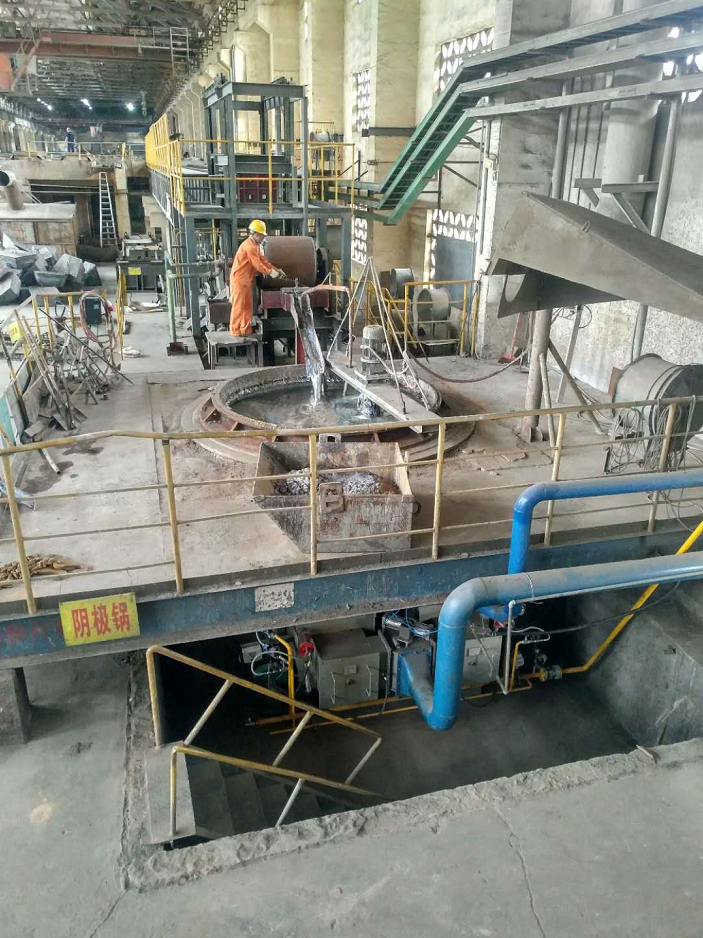The anode is made of coarse or semi refined lead, the cathode is made of pure lead, and the electrolyte is composed of silicofluoric acid and lead silicofluoric acid.
Anode: Lead is oxidized into lead ions and enters the solution: Pb-2e=Pb2+;
Cathode: Lead ions in the solution are reduced to metal lead and precipitated: Pb2++2e=Pb.
During the electrolysis process, impurities such as iron, zinc, tin, nickel, diamond, and other metals with a lower standard electrode potential than lead dissolve into the solution together; Metals with standard electrode potentials corrected for lead, such as antimony, arsenic, pound, copper, tin, gold, and silver, do not dissolve and form anode slime, which adheres to the anode surface.
Electrolysis is the process of causing oxidation-reduction reactions on the cathode and anode by passing current through an electrolyte solution or molten electrolyte (also known as electrolyte). Electrochemical cells can undergo electrolysis under an applied DC voltage. The process of chemical changes caused by the passage of an electric current through a substance.

 English
English  Español
Español  Português
Português  русский
русский  français
français  日本語
日本語  Deutsch
Deutsch  Tiếng Việt
Tiếng Việt  Italiano
Italiano  Nederlands
Nederlands  ไทย
ไทย  Polski
Polski  한국어
한국어  Svenska
Svenska  Malay
Malay  বাংলা
বাংলা  हिन्दी
हिन्दी  Pilipino
Pilipino  Türk
Türk  عربى
عربى  Indonesia
Indonesia  norsk
norsk  čeština
čeština  Українська
Українська  Javanese
Javanese  فارسی
فارسی  తెలుగు
తెలుగు  Burmese
Burmese  български
български  Latine
Latine  Azərbaycan
Azərbaycan  Српски
Српски  Esperanto
Esperanto  Afrikaans
Afrikaans  Català
Català  Cymraeg
Cymraeg  Беларус
Беларус  Hrvatski
Hrvatski  Kreyòl ayisyen
Kreyòl ayisyen  Shqiptar
Shqiptar  Bosanski
Bosanski  Кыргыз тили
Кыргыз тили  ಕನ್ನಡ
ಕನ್ನಡ  IsiXhosa
IsiXhosa  Chichewa
Chichewa  Somali
Somali  O'zbek
O'zbek  հայերեն
հայերեն  Sundanese
Sundanese  Malagasy
Malagasy 






